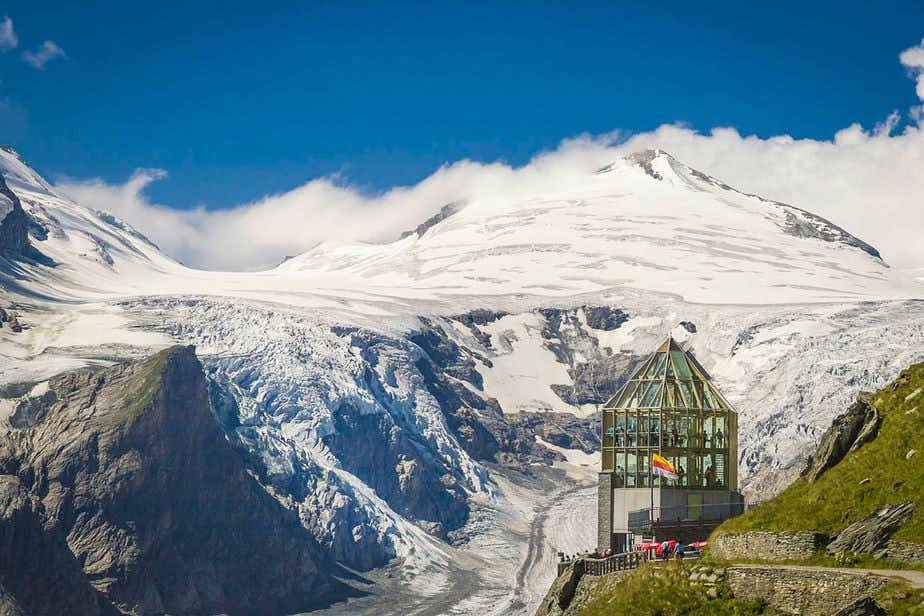Login
No account yet?
Create Account
Hohe Tauern National Park
Highest mountain in Austria and one of the highest waterfalls in Europe
2 travellers have this on their Bucket List
0 been here
Hohe Tauern National Park has the highest mountain in Austria. It also has the longest glacier in the Eastern Alps: the 9 km long Pasterze Glacier. The numerous waterfalls, some of which are among the largest in Europe, are also popular to visit.
Hohe Tauern National Park in Austria boasts lots of attractions. Gneiss rock, glaciers, lakes, lots of rock formations and mountain meadows – a brief description of the impressive landscape of Hohe Tauern. The numbers are also impressive:
This mountain reserve has 266 peaks that are 3.000 metres or higher, 342 glaciers totalling a 130 km2 combined, 279 brooks, 57 of which are glacier brooks, 26 large waterfalls and at the last count, there were 551 mountain lakes.
It’s proper wilderness: rugged, vast and most of all unspoiled. It also has an interesting history. Like all of the Alps, it was created when the tectonic plate of Africa slid towards and on top of the European plate. This created folds in the earth’s surface, pushing up the land below, in this case, it was the former sea between Europe and Africa. They still find fossils from that era in the mountains there.
The different ice ages created huge glaciers, and their immense weight cut deep valleys in the land. The mountain meadows (‘almen’) were formed when the tongue of the glacier moved across the land. Hoge Tauern is still expanding, but those few centimetres a year are barely perceptible, and the erosion caused by wind, rain, snow and ice advances more rapidly anyway.
Krimml Waterfalls
The Krimml Waterfalls are also popular, they are 380 metres high and some of the highest. Its water falls in three stages. You will find the waterfall located near the village of Krimml. It is one of the absolute highlights in the Hohe Tauern National Park.
See my tips for Krimml Waterfalls
Grossglockner High Alpine Road
The Grossglockner High Alpine Road is one of the most famous roads in Europe. This road is 47.8 kilometers long. The High Alpine Road was built in 1935. The Grossglockner Hochalpenstrasse runs straight through the Hohe Tauern National Park and reaches 2,504 meters as the highest point. You pass countless bends. The ever-changing view is special.
Grossglockner
Grossglockner, or Groβglockner, is the highest mountain of Austria. It is 3,789 metres high. you'll see this impressive mountain on your hikes. Make a stop to enjoy the impressive scenery.
Großvenediger
The Großvenediger is an imposing mountain of 3,666 meters in the national park. He the highest of the Venediger group, a row of mountain peaks. The Großvenediger is very popular. You can climb this mountain with an experienced, although it is certainly not an easy hike.
Wildlife in Hohe Tauern National Park
Hohe Tauern is a region that calls for exploration. It’s also home to more than 10.000 kinds of animals, both large and smalls, many of whom you could meet in person. The popular and cute alpine marmots, for example, or the cool ibex and the adorable chamois.
The brown bears are no longer around, unfortunately, they were all hunted. But it is now the largest protected nature reserve in the European Alps.
Visiting Hohe Tauern National Park
These are obviously mountains, so travel in winter can be a challenge. You won’t be able to reach many of the attractions such as the Grossglockner High Alpine Road. But in springtime, you can easily travel here and still see lots of snow.
It’s all part of this extreme landscape in the heart of Europe. And you can even encounter snow here in July, even outside of the glaciers. You can see a lot of flowers here in June, July and August, which attracts lots of different animals.
Be aware!
The Hohe Tauern is very popular, especially in the weekend and peak seasons. It’s possible to get stuck in a traffic jam on the Grossglockner Hochalpenstrasse, and also at the Krimml Falls. It would be a pity to get caught up in one of those, and a bit of planning could ensure you don’t.
The weather is very up and down here. It can reach up to 30 degrees Celsius, but it can also freeze 20 degrees below zero, even in springtime. Make sure you’re well prepared if you plan to go hiking.
2 travellers have this on their Bucket List
0 been here


